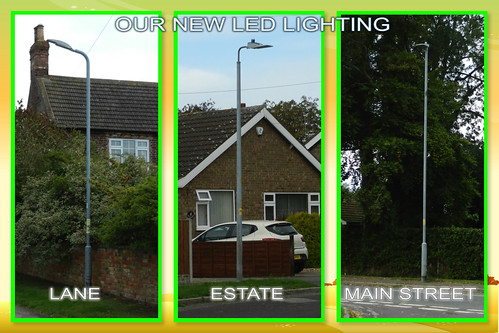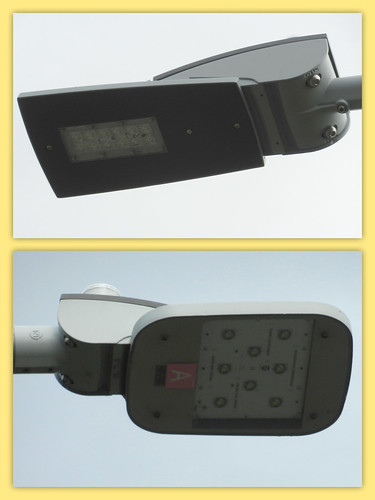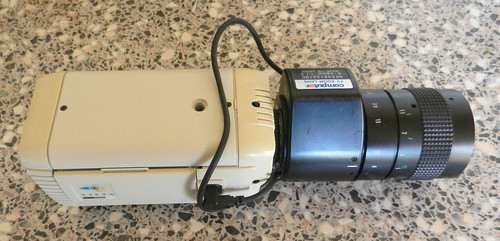In my immediate area some lamps are maintained by Lincolnshire County Council. The remainder by East Lindsey District Council. How long they stay on at night depends on who owns them and where they are. Along my lane they are owned by ELDC and stay on all night. In the small estate immediately behind me they are owned by LCC and switch off about midnight. Another money saving venture.

Those along the main street belong to LCC. As far as I can tell they operate all night.
One advantage of this change is due to the design of the lamp housing and LEDs. They concentrate the light downwards with little, if any, escaping upwards. When I looked out of my kitchen window at night there used to be an orange glow in the sky from light spillage. Now the sky looks dark, especially after midnight.

Estate lamp at the top, main street lamp at the bottom.
These changes coincided with an interesting, to me, edition of The Sky at Night broadcast last Saturday. (I still miss Patrick Moore and rarely watch the latest presenters) This programme was about spotting and monitoring meteors and asteroids. Of interest to me was a short section about automatic photo and video recording 'shooting stars'. Something I have long wanted to have a go at but not bothered about with the amount of local light pollution. Now it may well be worth a coat of looking at. Mentioned in the programme was the UK group UKMON. Their website seems a good starting point for information on this subject.
A well waterproofed housing looks the first problem as most are designed to be angled below the horizontal. They may not be so efficiently water proofed when angled upwards. Seems like a job for the hot melt glue gun. Then it will need some 12V heating to clear any condensation which forms on cold nights.
I have an old but reasonable quality b/w video camera.

The main problem will be how to divide any recorded video into easily viewed sections. I don't fancy scanning through single nightly files with several hours continuous recording attempting to spot a possible 2 second streak of light. I have a spare DVR (digital video recorder) which can record moving objects by detecting changes in contrast in any part of the image. Not sure its detecting ability is good enough or fast enough to spot a shooting star though. Plenty to research and experiment with as the dark nights lengthen.

This looks really interesting.
ReplyDeleteI wonder looking at racing footage from both cars and bikes if the cameras they use would generate a solution. At one time they seemed to have a film that advanced when the lens got dirty. Now they seem to keep clean on their own. Just a thought. They cope with rain, spray and humidity or appear to.
Adrian: I did look into that idea as a possible solution. They may work well for short periods of time but I wonder how they would cope with 24/7 wild Winter weather. I fancy using a b/w camera as they tend to have no IR cut filters which should give an advantage in showing up a piece of burning rock as it enters the atmosphere. For stills one possibility is using my Canon 350D which has the IR filter removed. The idea is to take a continuous series of 6 to 8 minute exposures.
DeleteMaybe I could 'borrow' one of those speed camera housings which have a windscreen wiper ;)
May be worth giving these folk a ring.
DeleteHONDA RACING
They are on your doorstep and even if they won't donate a camera the Fireblade is always worth a look see,
This sounds a good project. I wonder if the change of lighting will affect the robins singing at night?
ReplyDeleteDave: Good point. There has been much discussion about the possible effects on wildlife of all night street lighting in the past. It will be interesting to see what happens as we get back to a more natural day / night illumination cycle.
DeleteYou always have such interesting projects developing.
ReplyDelete